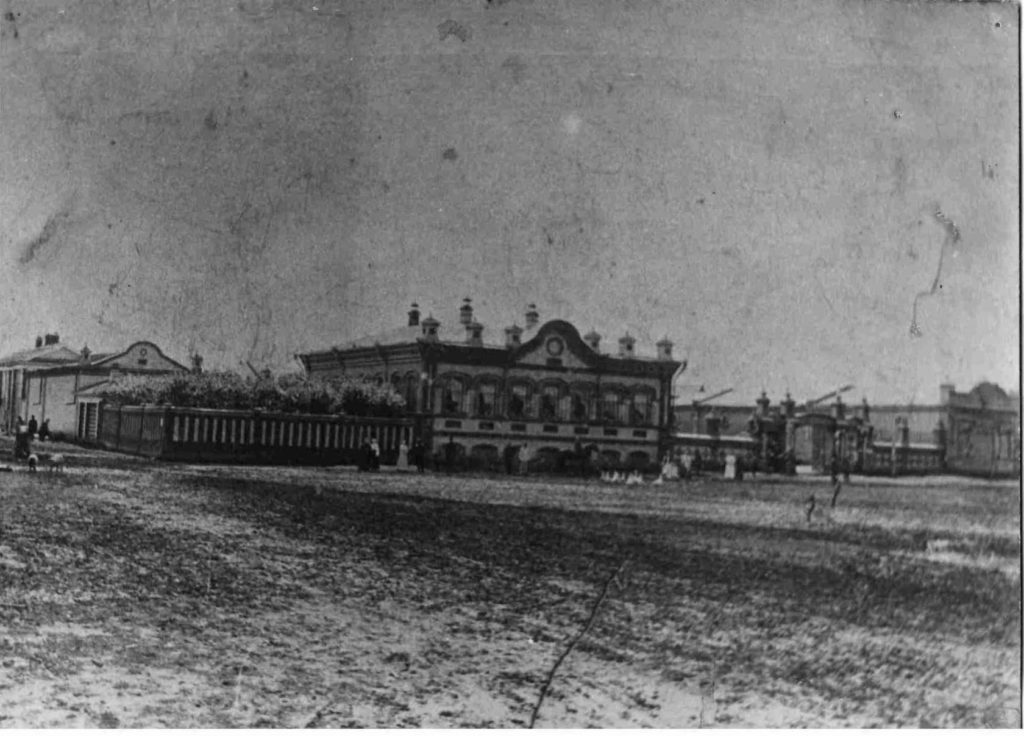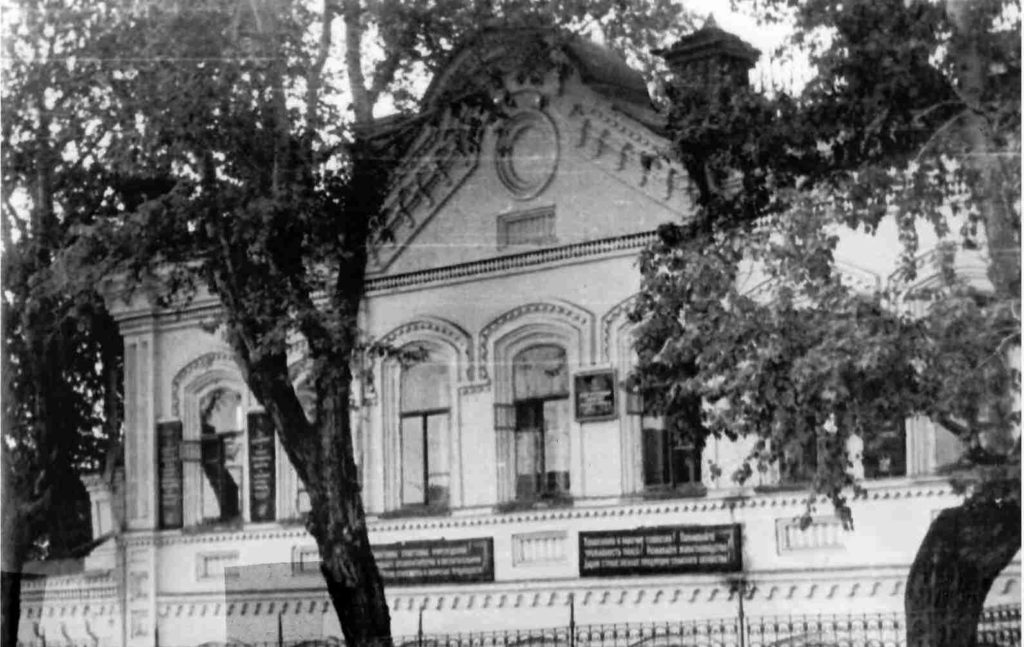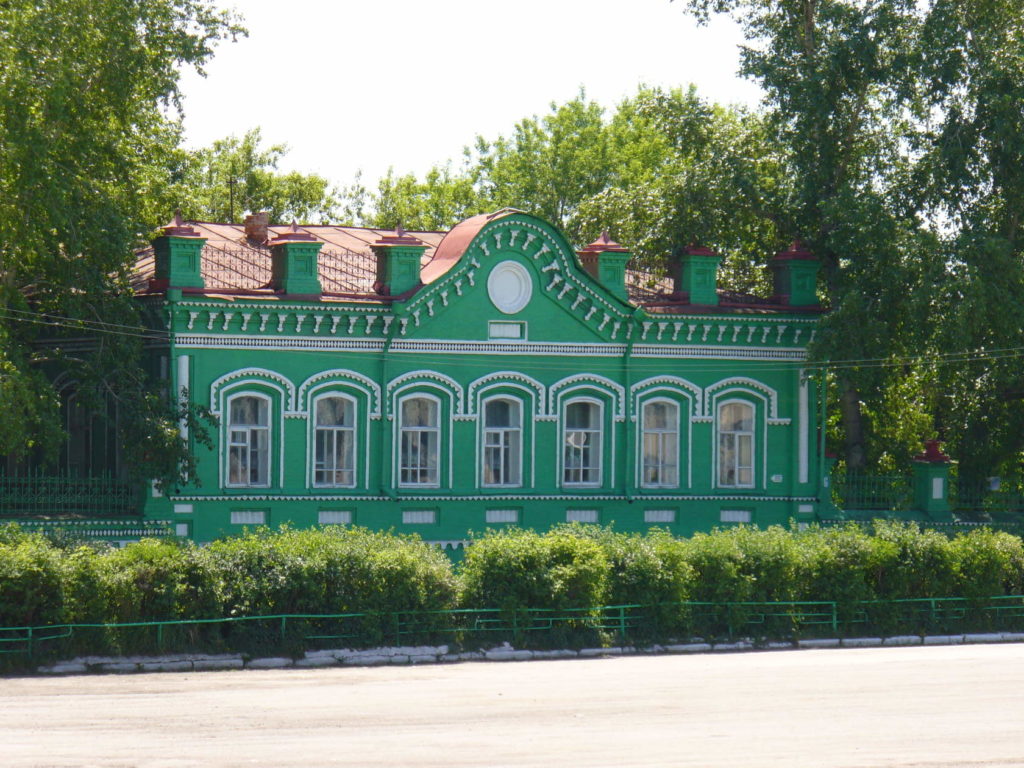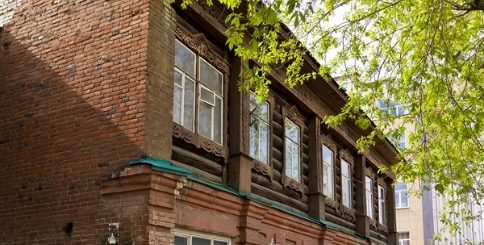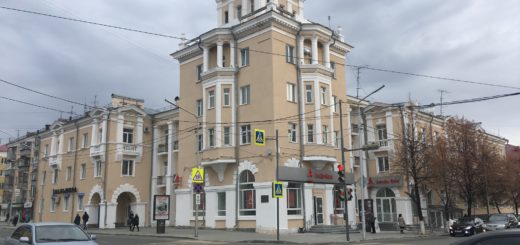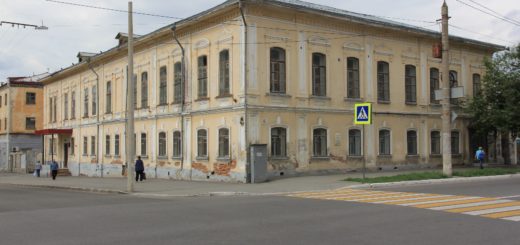Дом сельских умельцев
Историческая справка
объекта культурногонаследия регионального
значения «Домсельских умельцев», находящегося по адресу:
Мокроусовский муниципальный округ, с.Мокроусово ул.Советская, 36
Идею о районном музее первым подал Валерий Павловича Бражнов – энтузиаст музейного дела, работавший в то время заведующим отделом пропаганды и агитации районного комитета партии. Он вспоминал, что как только ступил на мокроусовскую землю, сразу обратил внимание на очень красивый особняк в центре Мокроусово. И у него сразу зародилась мысль: «Быть здесь музею!». И постепенно его служебный кабинет стал своеобразным хранилищем экспонатов.
Под здание музея был выделен особняк купчихи Пискулиной (Кетовой) Прасковьи Мартыновны – прекрасный архитектурный памятник начала XX века, расположенный в центре села. Согласно посемейному списку 1889 г., Парасковья Мартыновна Пискулина (Кетова), рожденная 26 июля 1866 года, была дочерью крестьян Пермской губернии Шадринского уезда Каргапольской волости села Вороновского Мартина (Мартына) Екимовича Кетова и Евдокии Фроловны и внучкой крестьян той же волости и села Екима Даниловича и Татьяны Григорьевны Кетовых (оба ок. 1817 г.р.). На этот период она была уже замужем за Иваном Никифоровичем Пискулиным (около 1868-10.02.1898) и в посемейном списке не указана; у них было трое детей: Екатерина, Зинаида и Анатолий.Из нотариального духовного завещания М.Е.Кетова, составленного 17 июня 1899 года и заверенного в нотариальной конторе А.В.Хаберева по улице Троицкой в г. Кургане, следует, что он оставил в пожизненное владение все без исключения свое движимое и недвижимое имущество своей жене Евдокии Фроловне. Смерть Евдокии Фроловны последовала 14 марта 1917 г. на станции Лебяжье и все свое имущество она оставляет своей дочери Прасковье Мартыновне Пискулиной.
Музей создавался методом народной стройки при участии многих трудовых коллективов под руководством райкома партии. Торжественное открытие музея состоялось 29 декабря 1977 года. В нем принял участие секретарь Курганского обкома партии по идеологии Павел Алексеевич Матвеев. Он записал в Книге почетных посетителей: «Горячо и сердечно поздравляю от имени Курганского областного комитета КПСС товарищей-мокроусовцев со знаменательным событием в духовной жизни района – открытием музея. Музей расположен в старинном, украшающем центр села, здании. Оформлен музей содержательно».
В 13 залах музея отображены различные периоды истории района и села, его далекое прошлое и сегодняшний день. Во дворе музея создан мемориальный комплекс участникам Великой Отечественной войны и труженикам тыла («Вечный огонь»). Слева установлен необычный экспонат: одна из пушек, построенных на средства мокроусовцев, образца 1937 года. Калибр 76, дальность стрельбы 9600 м., конструкции Героя Социалистического Труда Грибина, год выпуска 1943-й, завод имени Сталина (ЗИС). Участвовала в боях на заключительном этапе войны против танков и живой силы противника. Ее привез из воинской части заведующий отделом культуры В.С.Погадаев. В юбилейном 2015 году к «вечному огню» во дворе добавился стенд «Бессмертный полк» с фотографиями участников Великой Отечественной войны.
Историческая справка подготовлена по материалам Администрации Мокроусовского муниципального округа.
Municipal state institution
«Mokrousovsky District Museum of History and Local Lore»
Historical reference
Local history
Mokrousovsky Municipal District, Mokrousovo Village, 32 Sovetskaya Street
The idea of the district museum was first submitted by Valery Pavlovich Brazhnov, a museum enthusiast who worked at that time as the head of the propaganda and agitation department of the district party committee. He remembered that as soon as he set foot on the Mokrousov land, he immediately drew attention to a very beautiful mansion in the centre of Mokrousovo Village. And he immediately thought: «There must be a museum! And gradually his office became a kind of repository of exhibits. The mansion of the merchant Piskulina Praskovya Martynovna, a fine architectural monument of the early 20th century, located in the centre of the village, has been given to the museum building. According to the family list of 1889, Paraskovya Martynovna Piskulina (Ketova), born on 26 July 1866, was a daughter of the peasants Martin (Martyn) Ekimovich Ketov and Evdokiya Frolovna from Perm Gubernia, Shadrinsk District, Kargapolskaya Volost, village Voronovskogo;and she was a granddaughter of the peasants of the same volost and village Ekim Danilovich and Tatiana Grigoryevna Ketov (born about 1817).
At that time she was married to Ivan Nikiforovich Piskulin (1868-10.02.1898) and was not mentioned in family list; they had three children: Katerina, Zinaida and Anatoly. From notarial will of M.E.Ketov drawn up on June 17 1899 and notarized at the office of A.V.Khaberev in Troitskaya Street in Kurgan, it follows that he left all his movable and immovable property to his wife Evdokia Frolovna for living possession without exception. The death of Evdokia Frolovna occurred on 14 March 1917 at Lebyazhy station and she left all her possessions to her daughter Praskovya Martynovna Piskulina. The museum was created by the people’s construction method with the participation of many labour collectives under the leadership of the district party committee. The inauguration of the museum took place on December 29, 1977. The opening ceremony was attended by Pavel Matveev, the secretary of the Kurgan Regional Communist Party Committee on ideology. He wrote in the honourable Visitors’ Book: “On behalf of the Kurgan Regional Committee of the Communist Party of the Soviet Union, I warmly congratulate the comrades of the Mokrousov family on the opening of the museum, a significant event in the spiritual life of the district. The museum is located in an old building decorating the centre of the village. The museum is decorated in a meaningful way”.
The 13 halls of the museum reflect different periods in the history of the district and the village, its distant past and present day. In the museum yard, there is a memorial complex for participants of the Great Patriotic War and home front workers («Eternal Flame»). On the left is an unusual exhibit: one of the cannons, built at the expense of the citizens of Mokrousov, model 1937, calibre 76, range — 9600 m, designed by Hero of Socialist Labour Gribin, manufactured in 1943, plant named after Stalin. It participated in fights against tanks and enemy manpower during the final stage of the war. It was brought from the military unit by the head of the culture department, V.S.Pogadaev. In the jubilee year of 2015 the «eternal flame» in the courtyard was complemented by the stand «Immortal Regiment» with photos of participants of the Great Patriotic War.
Historical reference is prepared according to the materials of the Mokroussov Municipality Administration.

